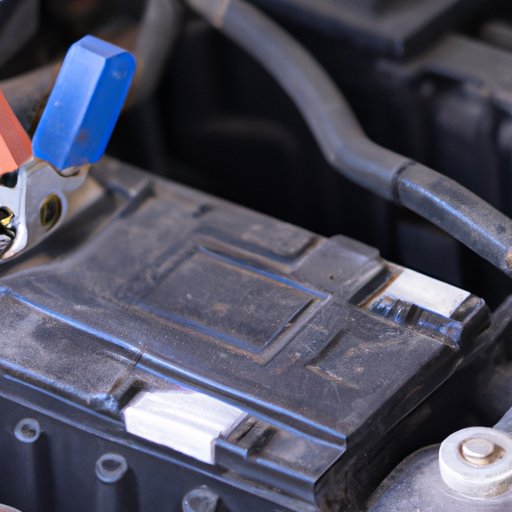
I. Introduction
If you’ve ever gone to start your car and found that it won’t turn over, you may need to replace your car battery. While car batteries are designed to last for several years, they can become faulty due to age, weather, or neglect. This article will provide a step-by-step guide to help you replace your car battery, as well as tips for selecting the right battery and troubleshooting common battery issues.
II. Understanding the Symptoms of a Dying Battery
The first step in replacing your car battery is recognizing the signs of a dying battery. Symptoms can include slow cranking, dim headlights, and strange electrical issues. If you notice any of these signs, it’s important to address them early on to avoid getting stranded.
III. The Importance of Battery Maintenance
Proper battery maintenance is crucial to extending the life of your battery. Regular maintenance, such as checking connections, cleaning terminals, and charging regularly, can prevent premature failure and ensure that your battery is always ready to go.
IV. A Step-by-Step Guide for Replacing Your Car Battery
Replacing your car battery is a fairly straightforward process that can be done at home with a few basic tools. However, it’s important to take safety precautions, such as wearing gloves and goggles, and disconnecting the negative terminal first. Once you’ve removed the old battery, carefully install the new one, making sure to connect the terminals properly. For a more detailed guide, you can check your car’s owner manual or consult online resources.
V. Tips for Choosing the Right Battery
When selecting a replacement battery, you’ll need to consider factors such as size, type, and brand. Most batteries are made of lead-acid, which is durable and inexpensive, but newer lithium-ion batteries are becoming increasingly popular due to their lighter weight and longer lifespan. It’s important to choose a battery that’s compatible with your car’s make and model and that meets your specific needs.
VI. Troubleshooting Common Battery Issues
Common battery issues can include corrosion, low water levels, and sulfation. These issues can often be addressed with basic maintenance, such as cleaning terminals and adding distilled water. However, in some cases, it may be necessary to replace the battery. If the battery is more than three years old, it’s a good rule of thumb to consider replacement.
VII. The Environmental Impact of Batteries
It’s important to dispose of dead or dying batteries properly in order to avoid environmental damage. Lead-acid batteries can pose a serious risk to the environment if not recycled properly. Many auto parts stores and recycling centers will accept dead batteries for recycling. There are also alternative battery options, such as lithium-ion batteries, that are less harmful to the environment and can be recycled more easily.
VIII. Conclusion
Replacing your car battery may seem daunting, but with the right tools and knowledge, it can be done quickly and safely. By taking battery maintenance seriously and being aware of the warning signs of a dying battery, you can avoid costly repairs and prolong the life of your vehicle. Remember to dispose of old batteries properly to protect the environment and consider alternative battery options when possible.




